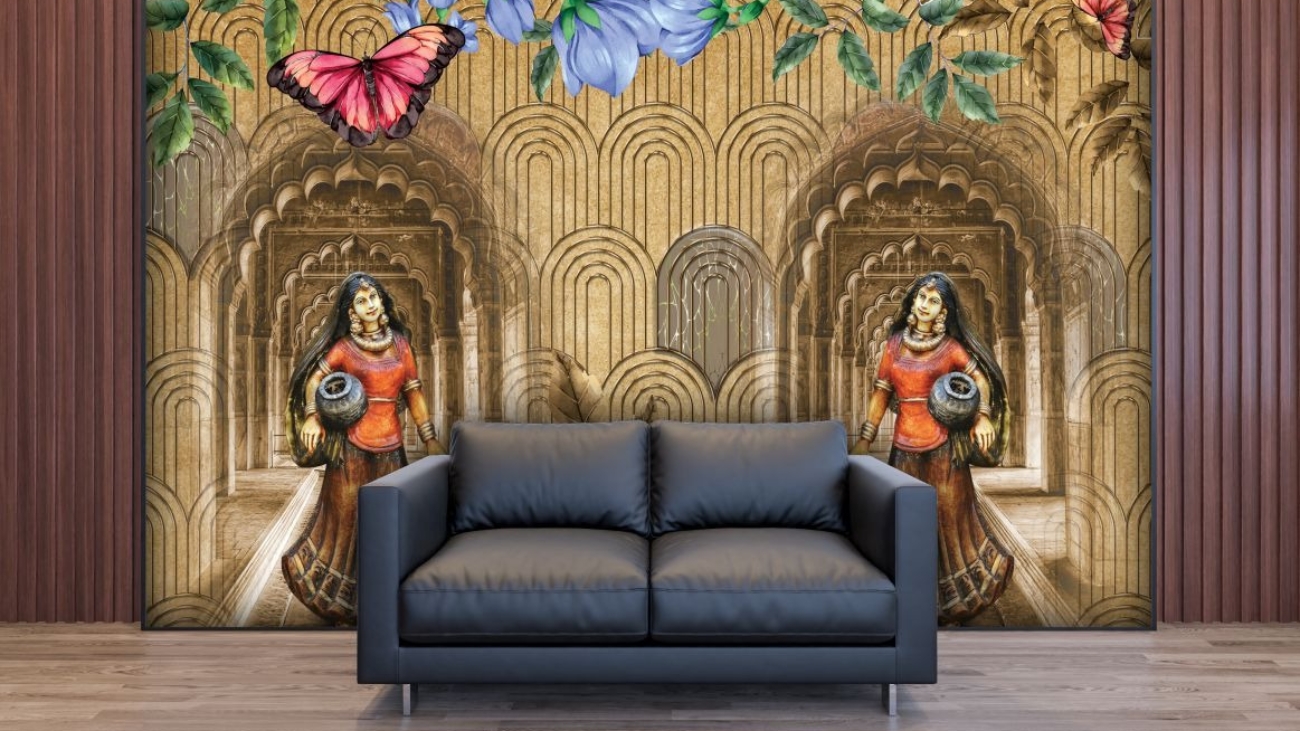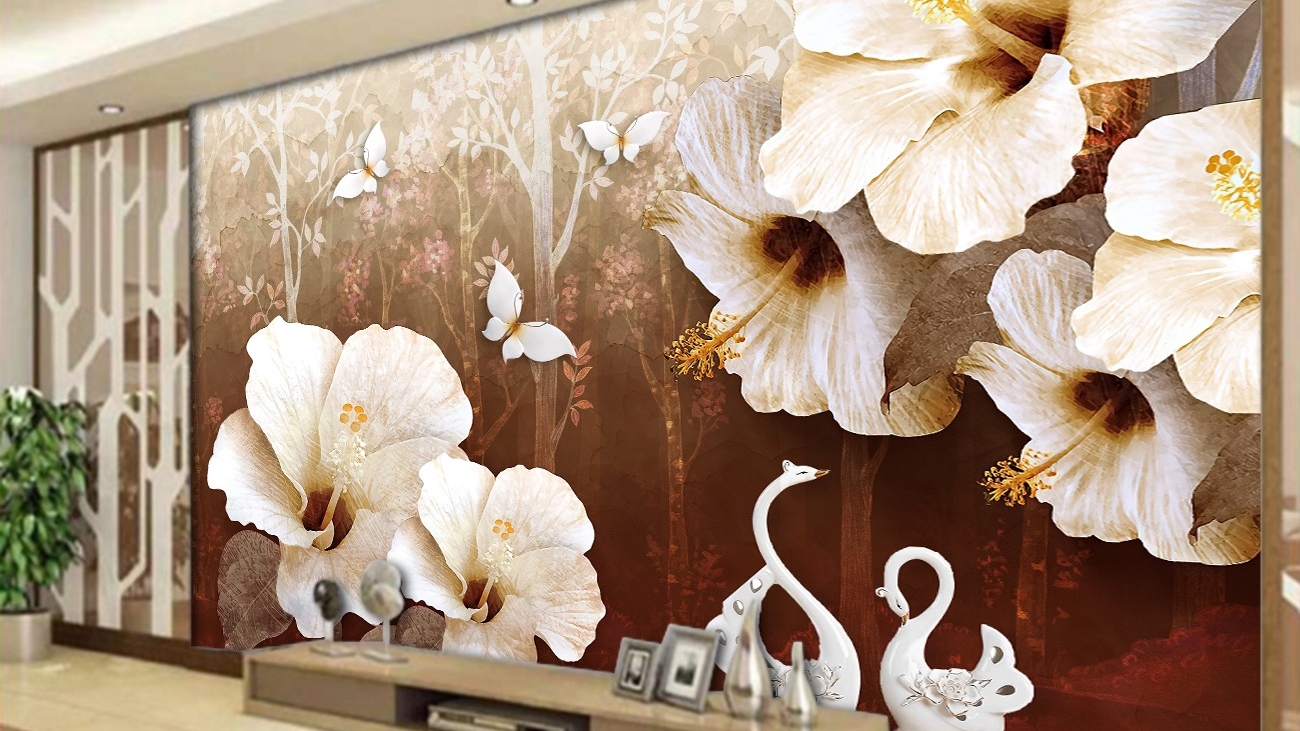Wallpaper can instantly elevate the look of any room, adding color, texture, and personality. However, it’s not without its challenges, and without proper care and attention, mistakes during the wallpapering process can lead to disappointing results. Whether you’re an experienced DIY-er or a beginner, understanding the most common wallpaper mistakes will save you time, money, and frustration. In this blog, we’ll go over the top five wallpapering mistakes and provide expert tips on how to avoid them.
1. Choosing the Wrong Wallpaper for Your Space
One of the most common mistakes people make is choosing the wrong type of wallpaper for a particular room. Different rooms in your home have different environments, and each requires a specific kind of wallpaper. For example, a delicate paper-based wallpaper that looks beautiful in your living room may not hold up well in a high-moisture area like your kitchen or bathroom.
How to Avoid This Mistake:
- Know your wallpaper types: Wallpapers come in different materials, each suited for specific environments. Vinyl wallpaper, for example, is moisture-resistant and easy to clean, making it ideal for kitchens and bathrooms. On the other hand, grasscloth wallpaper offers texture and elegance, but it’s not as durable in high-traffic areas or humid spaces.
- Consider room functionality: Think about how the room is used. High-traffic areas like hallways may benefit from durable, washable wallpapers, while bedrooms may be better suited for softer, fabric-based options that create a cozy atmosphere.
2. Poor Surface Preparation
Failing to properly prepare your walls before installing wallpaper is another common mistake that can lead to a variety of issues, from poor adhesion to visible imperfections. If you apply wallpaper to walls that are dirty, uneven, or have remnants of old wallpaper, the new wallpaper won’t adhere correctly and may start peeling or bubbling over time.
How to Avoid This Mistake:
- Clean and smooth the walls: Before applying wallpaper, make sure the walls are clean and free of dust, dirt, and old adhesive. Use a mild detergent solution to clean the surface and allow it to dry completely.
- Repair any imperfections: Fill in cracks, holes, or dents in the wall with spackle or joint compound, and sand the surface until smooth. Even small imperfections can cause the wallpaper to bubble or not adhere properly.
- Prime the walls: Applying a wallpaper primer creates a uniform surface and helps the wallpaper adhere better. It also makes removing the wallpaper easier in the future.
3. Not Measuring Properly
One of the most frustrating mistakes is miscalculating the amount of wallpaper needed. Ordering too little wallpaper can delay your project, while ordering too much can waste money. Failing to measure correctly can also lead to uneven patterns or poorly aligned seams, which can ruin the overall look of your wallpaper installation.
How to Avoid This Mistake:
- Measure twice, cut once: Carefully measure the height and width of each wall, taking into account windows, doors, and other features that may affect the amount of wallpaper needed.
- Account for pattern repeat: Many wallpapers have patterns that repeat at regular intervals. When measuring, be sure to account for the pattern repeat, as it will affect how much wallpaper you need to purchase. This is especially important for large-scale patterns, where matching the design at the seams is crucial.
- Order extra: It’s always a good idea to order a little extra wallpaper (about 10-15% more than you think you’ll need). This ensures you have enough for any mistakes or repairs and that you won’t have to scramble to match a specific wallpaper batch.
4. Ignoring the Importance of Seams
Wallpaper seams can be tricky. If they’re not handled correctly, they can become visible, peel away, or misalign, ruining the overall effect of your wallpaper. One common mistake is overlapping seams to try to hide them, which only makes the problem worse. Poorly aligned seams are especially noticeable on patterned wallpapers, where the design needs to flow seamlessly across the wall.
How to Avoid This Mistake:
- Use the “butt join” method: When applying wallpaper, the edges of each strip should meet without overlapping. This is known as the “butt join” method, and it ensures a smooth, invisible seam.
- Align patterns carefully: For wallpapers with a repeating pattern, take extra care to align the design at the seams. Start hanging your wallpaper from a straight vertical line (use a plumb line or level) and ensure that the pattern matches from one strip to the next.
- Smooth the seams: After hanging each strip, use a wallpaper brush or smoother to press the seams gently but firmly into place, removing any air bubbles and ensuring good adhesion.
5. Overwhelming Small Spaces with Large, Bold Patterns
While bold patterns can create a dramatic and exciting look, using them in small spaces can sometimes feel overwhelming or claustrophobic. In smaller rooms or spaces with low ceilings, large-scale patterns may dominate the room, making it feel cramped or cluttered. This doesn’t mean you have to avoid bold designs altogether, but it’s important to use them thoughtfully.
How to Avoid This Mistake:
- Consider the scale of the pattern: In smaller rooms, opt for wallpaper designs with smaller, more delicate patterns. These will add interest to the space without overpowering it. If you do want to use a bold design, consider limiting it to one accent wall, rather than covering all four walls.
- Use vertical patterns to enhance height: Vertical stripes or patterns can help create the illusion of height in a small room, making the space feel taller and more open. This is a great solution for rooms with low ceilings.
- Balance bold patterns with neutral elements: If you choose a bold pattern for a small space, balance it with neutral furniture and decor to prevent the room from feeling too busy. This will help maintain a sense of harmony and flow in the room.
Conclusion
Wallpaper can elevate the design of your home in ways that paint simply cannot. However, avoiding common mistakes is essential to achieving a flawless finish. By choosing the right type of wallpaper for each room, preparing your walls properly, measuring accurately, handling seams with care, and using bold patterns thoughtfully, you’ll be well on your way to creating stunning spaces that reflect your personal style.
Remember, wallpapering is an investment in your home’s aesthetic, so take the time to do it right. If you’re unsure, consider consulting with a professional installer to avoid these pitfalls. Whether you’re aiming for a bold statement wall or a subtle backdrop, the right wallpaper can transform any room into a masterpiece.
Ready to get started on your wallpaper journey? Explore our wide range of high-quality wallpapers and find the perfect match for your home!


 Cart is empty
Cart is empty 

